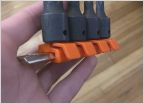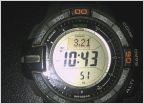-
Welcome to Tacoma World!
You are currently viewing as a guest! To get full-access, you need to register for a FREE account.
As a registered member, you’ll be able to:- Participate in all Tacoma discussion topics
- Communicate privately with other Tacoma owners from around the world
- Post your own photos in our Members Gallery
- Access all special features of the site
Who Is Right, Who Is Wrong? Theoretical Math Challenge!!
Discussion in 'Off-Topic Discussion' started by The Traveler, Mar 12, 2013.
Page 1 of 3
Page 1 of 3


 Mystery Socket Rail Brand
Mystery Socket Rail Brand Video call question
Video call question 2024 OFFICIAL TW SECRET SANTA - WISHLIST THREAD!
2024 OFFICIAL TW SECRET SANTA - WISHLIST THREAD! Outdoor Watch
Outdoor Watch No I am not your uber driver. GTFO of my truck
No I am not your uber driver. GTFO of my truck Pulled the plug on Satellite Provider. San Diego referral for TV Antenna Install?
Pulled the plug on Satellite Provider. San Diego referral for TV Antenna Install?











































































